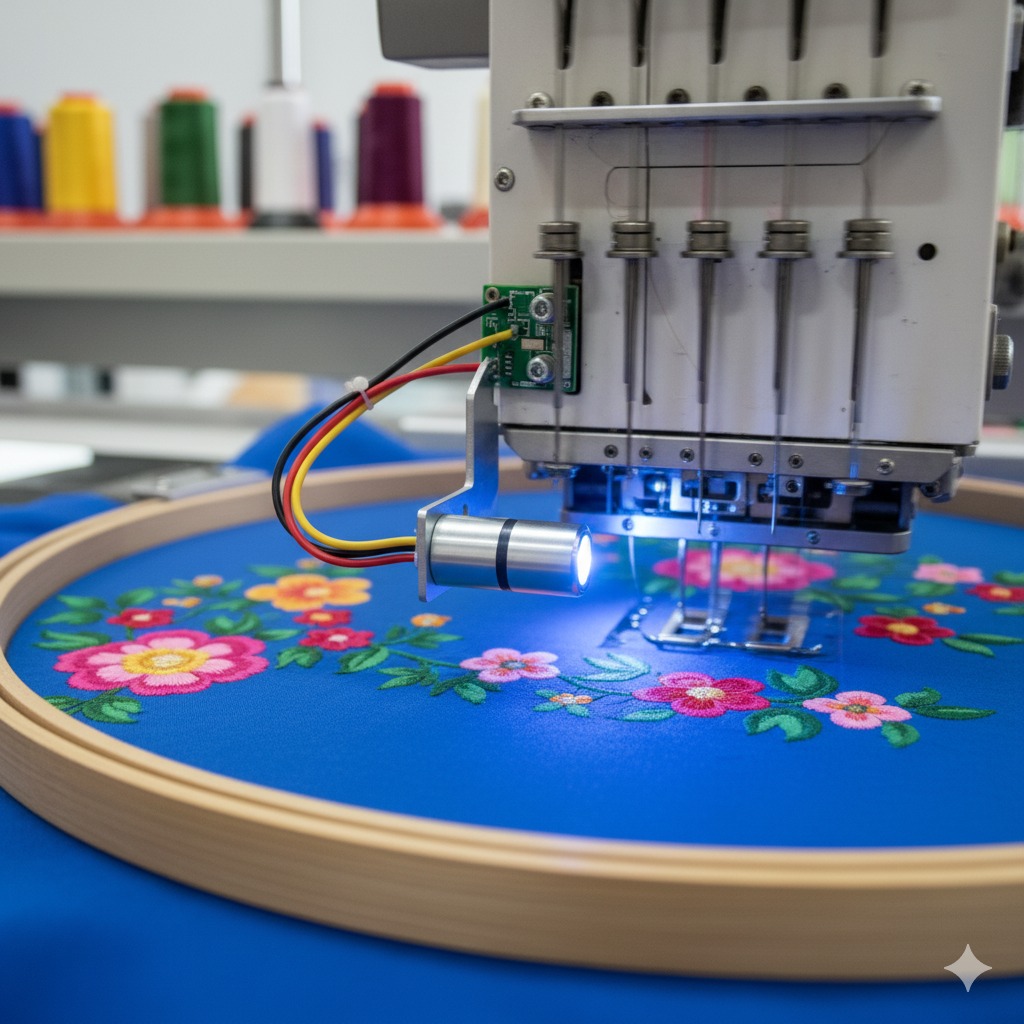Proximity sensors play a vital role in modern embroidery machines, ensuring precise control, safety, and efficiency. At 360 Digitizing Solutions, we provide premium-quality proximity sensors designed for Tajima, Barudan, SWF, Brother, and other commercial embroidery machines. This comprehensive guide will help you understand proximity sensors, their types, uses, and why choosing the right sensor is critical for smooth embroidery operations.
What is a Proximity Sensor?
A proximity sensor is an electronic device that detects the presence or absence of an object within a certain range without physical contact. In embroidery machines, proximity sensors are typically used for detecting needle positions, head movements, and hoop positioning, enabling precise stitching and automated safety functions.
Importance of Proximity Sensors in Embroidery Machines
- Precise Positioning – Ensures correct needle and head positioning, reducing production errors.
- Machine Safety – Detects obstructions and prevents mechanical crashes.
- Automation – Enables automatic color changes, trimming, and head shifting.
- Reduced Downtime – Early detection of misalignments minimizes costly breakdowns.
- Consistent Quality – Helps maintain embroidery accuracy across multiple production cycles.
Types of Proximity Sensors Used in Embroidery Machines
There are several types of proximity sensors available for different applications:
| Type | Detection Principle | Typical Use |
|---|---|---|
| Inductive | Detects metallic objects using EM fields | Needle position sensing, motor rotation detection |
| Capacitive | Detects any material by capacitance change | Hoop detection, fabric presence check |
| Photoelectric | Uses light beams to detect objects | Thread break detection, hoop presence |
| Magnetic (Reed) | Magnetic field-based detection | Head movement control, limit switches |
Popular Brands Supported
We stock and support proximity sensors compatible with:
- Tajima
- Barudan
- SWF
- Brother
- Happy
- ZSK
- Melco
Our sensors are tested for durability, accuracy, and easy installation.
Choosing the Right Proximity Sensor
When buying a proximity sensor for your embroidery machine, consider:
- Compatibility – Match with your machine brand and model.
- Sensing Distance – Ensure proper range to avoid false triggers.
- Operating Voltage – Choose AC or DC as per your machine requirement.
- Mounting Size – Select correct thread and housing size (M8, M12, etc.).
- Environmental Resistance – Opt for dustproof and waterproof sensors for longevity.
Benefits of Buying from 360 Digitizing Solutions
- High-Quality OEM-Compatible Parts – Designed for industrial embroidery machines.
- Expert Support – 24/7 guidance and installation assistance.
- Affordable Pricing – Competitive rates for individual and bulk orders.
- Global Shipping – Fast and reliable worldwide delivery.
Explore our full range of proximity sensors and machine parts here: 360 Digitizing Solutions Shop
Conclusion
Proximity sensors are small but powerful components that ensure embroidery machines run smoothly, efficiently, and safely. At 360 Digitizing Solutions, we help businesses keep their machines in top condition with high-quality, compatible proximity sensors. Whether you operate a single-head machine or a multi-head production line, choosing the right sensor improves productivity and reduces downtime.





